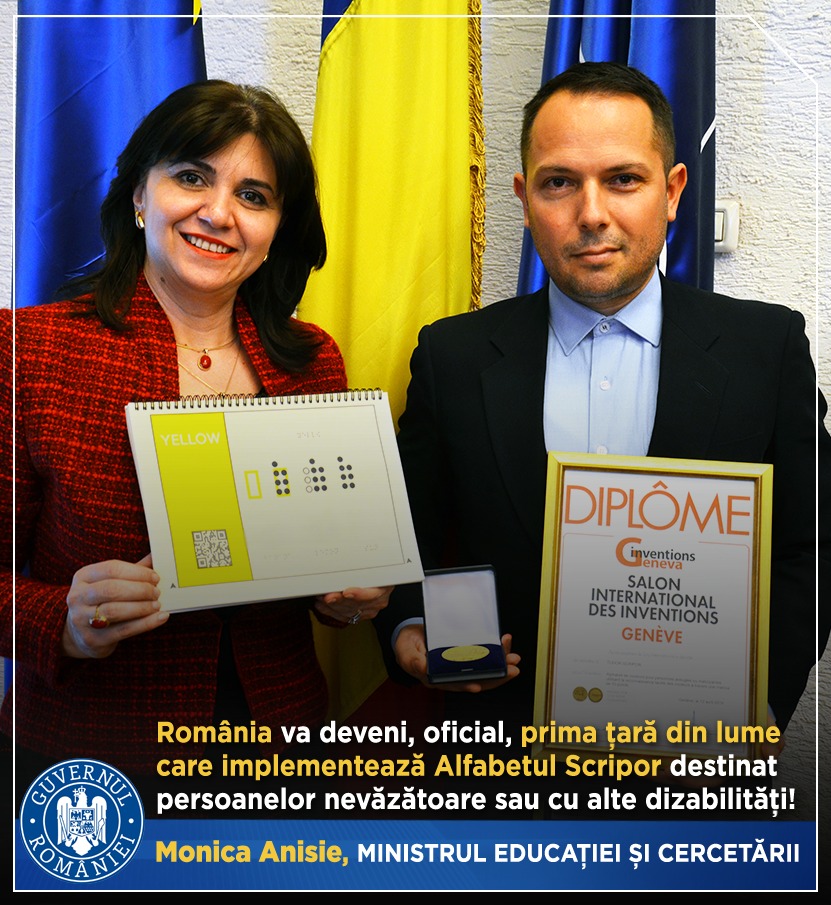On Thursday, February 6, 2020, a meeting took place at the headquarters of the Ministry of Education and Research in Romania between Minister Monica Anisie and Tudor Paul Scripor, the inventor of the Tactile Alphabet of Colors. His invention, known as the Scripor Alphabet, was awarded the Gold Medal in the Education, Culture, and Art category at the Geneva Salon of Inventions and Innovations, as well as the Special Prize of the Inventors Association of Germany.
The discussions focused on the numerous direct benefits that visually impaired individuals or those with other disabilities, such as autism spectrum disorders or Down syndrome, will be able to gain from the implementation of this tactile alphabet of colors. It provides practical solutions and will enable them to have full, free, and voluntary access to inclusive education.
Next week, a collaboration protocol will be signed between the Ministry of Education and Research of Romania and the Scripor Alphabet Association, which outlines the national implementation of this type of alphabet.
Thus, Romania will officially become the first country in the world to implement the Scripor Alphabet for visually impaired individuals and those with other disabilities.
After more than seven years of research and testing, Tudor Paul Scripor has found a solution for the tactile-graphic representation of color and hue through a symbol. The Scripor Alphabet is a universal language, and the color symbols can be easily recognized in any orientation. This innovative alphabet consists of only 10 tactile-graphic elements and can be learned by anyone, especially benefiting individuals with visual and intellectual disabilities, allowing everyone to live fully and accessibly in a predominantly visual world.
The Scripor Alphabet utilizes both two-dimensional geometric shapes and a simple system of dots, providing the user with two ways to obtain information through touch.

